Kusatsu Onsen Guide: Best Hot Springs, Travel Tips and Where to Stay

Kusatsu Onsen, one of the top three hot springs in Japan, can be easily accessed by direct bus from Tokyo. Learn more about the best natural hot springs in Kusatsu, food, souvenirs, and where to stay.
Kusatsu Onsen: A Hot Spring Paradise North of Tokyo
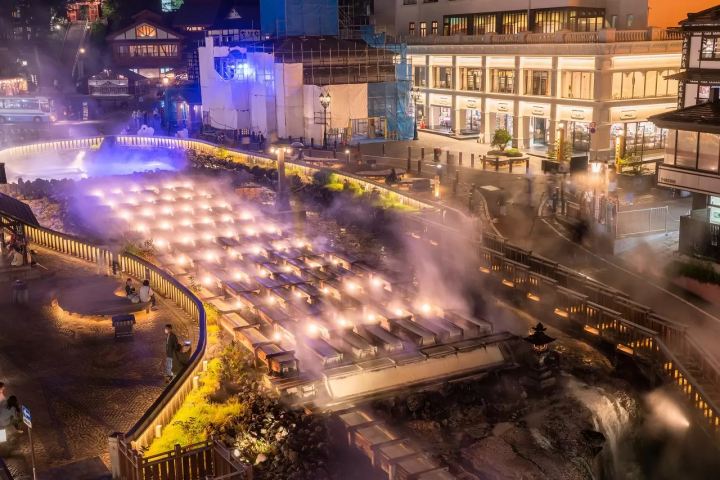
Photo by Pixta
Kusatsu Onsen is a hot spring district in Gunma Prefecture, located about three to four hours by bus from Tokyo. The amount of natural hot spring water flowing at Kusatsu Onsen is the highest in Japan. Kusatsu is known for its high-quality, free-flowing springs that are thought to warm the body and help kill bacteria.
There are many restaurants and cafes in Kusatsu Onsen, making the area lively even at night. Hot springs flow from the waterfall-like Yubatake in the town center, where visitors can see the large amounts of steam rising.
This article introduces the features of Kusatsu Onsen, places to visit, food, and accommodations for a relaxing hot spring trip.
Kusatsu Onsen Travel Tip
1. How to Get to Kusatsu Onsen
2. Kusatsu Onsen: Hot Spring Features and Sightseeing Highlights
Yubatake: Hot Spring Fields
Netsunoyu and Yumomi (Water Cooling) Performance
Yukemuri-tei Foot Batch
Sainokawara Park
3. How to Enjoy Hot Springs on a Day Trip to Kusatsu
4. The Best Cuisine in Kusatsu Onsen
5. Souvenir Shopping at Kusatsu Onsen
6. See the Light-up Displays at Night
7. Hotels and Inns in Kusatsu Onsen
8. The Best Time to Visit Kusatsu Onsen
1. How to Get to Kusatsu Onsen
Kusatsu Onsen is easy to access from Tokyo. You can get there in about four hours via express bus from the Shinjuku Bus Terminal.
It is also easy to reach as a side trip from Karuizawa in Nagano, as it is only around an hour and twenty minutes away by bus.
Access from Tokyo
| Departure from | Transfer | Required time | Fare |
| Ueno Station | 1 transfer Take the Kusatsu limited express to Naganohara-Kusatsuguchi Station. From here, take the JR Kanto Bus to Kusatsu Onsen. |
3 hours Ueno Station → Naganohara-Kusatsuguchi Station: 2 hours and 30 minutes. Naganohara-Kusatsuguchi Station → Kusatsu Onsen: 30 minutes. |
5,880 yen in total (Train) Ueno Station → Naganohara-Kusatsuguchi Station: 5,170 yen (unreserved seat) (Bus) Naganohara-Kusatsuguchi Station → Kusatsu Onsen Bus Terminal: 710 yen |
| Ueno Station | 2 transfers Take the JR Takasaki Line to Takasaki Station, then transfer to the local Agatsuma Line and head to Naganohara-Kusatsuguchi Station. From here, take the JR Kanto Bus to Kusatsu Onsen. |
4 hours in total (Train) Ueno Station → Takasaki Station → Naganohara-Kusatsuguchi Station: 3 hours and 20 minutes. (Bus) Naganohara-Kusatsuguchi Station → Kusatsu Onsen Bus Terminal: 30 minutes. |
3,720 yen in total (Train) Ueno Station → Takasaki Station → Naganohara-Kusatsuguchi Station: 3,080 yen (unreserved seat) (Bus) Naganohara-Kusatsuguchi Station → Kusatsu Onsen Bus Terminal: 710 yen. |
| Tokyo Station | 1 transfer Take theHokuriku Shinkansen to Karuizawa Station, then take local bus orSeibu Sightseeing Bus to Kusatsu Onsen. |
3 hours in total (Train) Tokyo Station → Karuizawa Station: 1 hour and 10 minutes (Bus) Karuizawa Station → Kusatsu Station: 1 hour and 30 minutes |
8,000 yen in total (Train) Tokyo Station → Karuizawa Station: 5,490 yen (unreserved seat) (Bus) Karuizawa Station → Kusatsu Station: 2,240 yen |
| Tokyo Station or Shinjuku Bus Terminal | No transfers Take the Highway Bus Joshu Yumeguri-go / Tokyo Yumeguri-go to Kusatsu Onsen |
4 hours (Bus) Tokyo Station / Shinjuku Bus Terminal → Kusatsu Onsen |
3,500 to 3,800 yen (Bus) Tokyo Station / Shinjuku Bus Terminal → Kusatsu Onsen |
| Shibuya Mark City | No transfers Take the highway bus headed to Karuizawa and Kusatsu Onsen |
4 hours and 30 minutes (Bus) Shibuya Mark City → Kusatsu Onsen |
3,600 yen (Bus) Shibuya Mark City → Kusatsu Onsen |
Read also
↑ Return to the top of article.
2. Kusatsu Onsen: Hot Spring Features and Sightseeing Highlights
At the center of Kusatsu Onsen lies Yubatake, the so-called hot springs fields built in order to cool the hot spring water before it reaches the bathing facilities of local inns.
In addition to Yubatake, there are five other spring sources in Kusatsu: Shirahata, Bandaiko, Sainokawara, Nigawa, and Jizo.
The spring quality differs depending on its source. For example, water from Yubatake is gentle on the skin, while the water from Shirahata is cloudy. Therefore, it is recommended to go hot spring hopping to experience the different water. Read on to learn more about the major highlights of Kusatsu Onsen.
1. Yubatake: Hot Springs Gushing out in the Center of Kusatsu Onsen

Picture courtesy of Kusatsu Tourism Association
The steam rising from Yubatake, only five minutes by foot from Kusatsu Onsen Bus Terminal, will welcome you when you first get to Kusatsu Onsen. This is the first place many people visit.
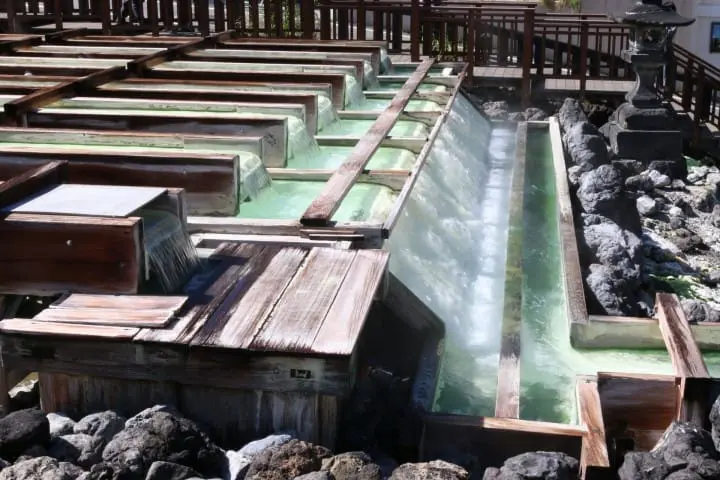
Yubatake was created in order to cool down the piping hot springs and to collect yunohana, minerals that solidified and sank to the bottom.
The natural hot spring flows through the wooden gutter and then flows out like a waterfall. This allows many facilities here to use the free-flowing hot springs in their natural state.

Yubatake is also a popular spot in Kusatsu for photos. At night, it is beautifully lit up, and the many souvenir shops and eateries close by make it fun to explore.
Yubatake
Address: Gunma, Agatsuma, Kusatsu Google Map
Access: 5 minutes from Kusatsu Onsen Bus Terminal
Official Website: Kusatsu Onsen (Japanese)
2. Netsunoyu, Yumomi, and a Dance Show
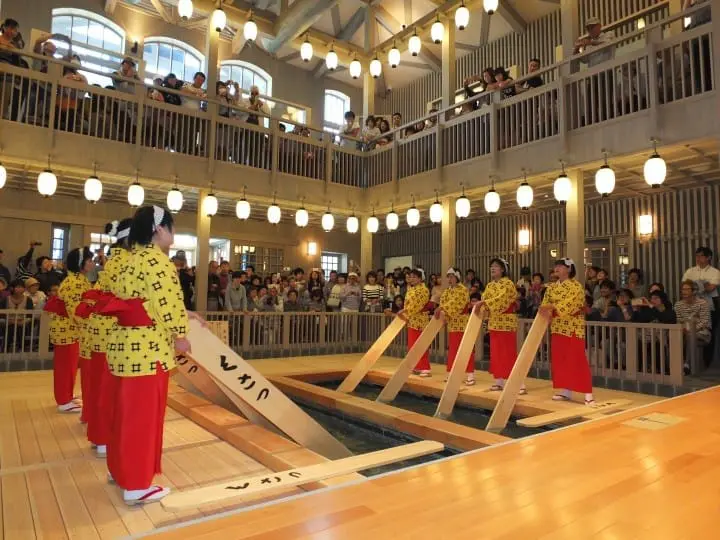
Picture courtesy of Kusatsu Tourism Association
At the facility called Netsunoyu, you can watch a traditional yumomi dance show performed daily.
Yumomi is a traditional method of cooling down the hot spring water in Kusatsu Onsen practiced since the Edo period (1603-1868). It involves using long wooden paddles to stir and cool the water, maintaining its temperature and providing a pleasant bathing experience for visitors.
During the show, you can see women wearing yukata (light kimonos) singing the Kusatsu-bushi song, "Kusatsu yoi toko ichido wa oide" (Kusatsu is a great place you have to visit at least once), while they stir the hot waters with the board rhythmically.
The Yumomi and Dance Show is held six times a day at 9:30, 10:00, 10:30, 15:30, 16:00, and 16:30. It costs 600 yen for adults and 300 yen for children; reservations are not needed.
Netsunoyu
Address: Gunma, Agatsuma, Kusatsu 414 Google Map
Access: 5-minute walk from Kusatsu Onsen Bus Terminal
Official Website: Netsunoyu (Japanese)
3. Try a Hot Spring Foot Bath at Yukemuri-tei
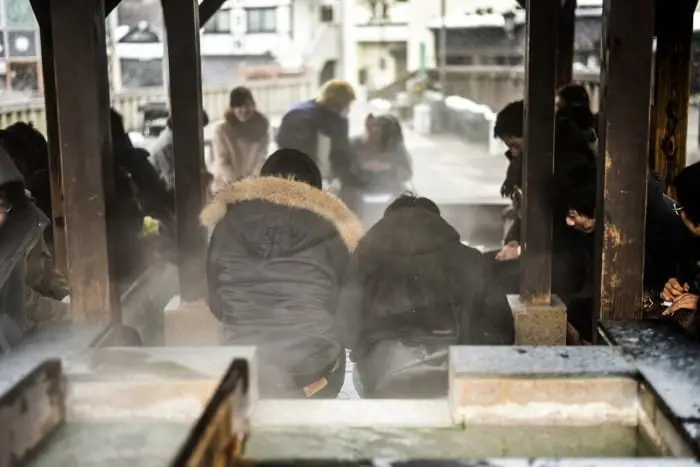
Yukemuri-tei is a foot bath right next to the Yubatake. The baths are made azumaya-style (*1), out of hinoki cypress. It is modeled after Matsunoyu, a public bath that used to be here during the Edo period. The hot water flows naturally from the hot spring sources.
There is another foot bath in front of Jizo no Yu a hot spring facility, located around three minutes on foot from the Kusatsu Onsen Bus Terminal. It is a perfect place to relax your feet after you get to Kusatsu or as a quick stop after exploring the shops around the Yubatake area.
All foot baths are open 24 hours and can be used free of charge.
*Azumaya: A hut with no walls and only made with pillars and a roof. Frequently used as a rest stop.
Yukemuri-tei
Address: Gunma, Agatsuma, Kusatsu Google Map
Access: 5-minute walk from Kusatsu Bus Terminal
Official Website: Yukemuri-tei (Japanese)
↑ Return to the top of article.
3. How to Enjoy Hot Springs on a Day Trip to Kusatsu
1. Sainokawara Open-air Bath
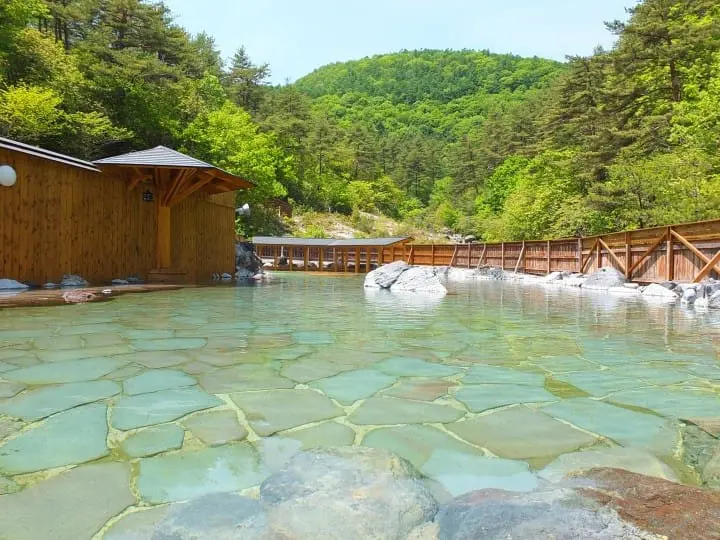
Picture courtesy of Kusatsu Tourism Association
Sainokawara Park is about a twenty-minute walk from Kusatsu Onsen Bus Terminal and the Yubatake.
Surrounded by volcanic rocks, streams, and lakes filled with hot springs, the park contains the largest open-air bath in Kusatsu Onsen. Here you can enjoy relaxing, bathing, and the outdoors of Kusatsu.
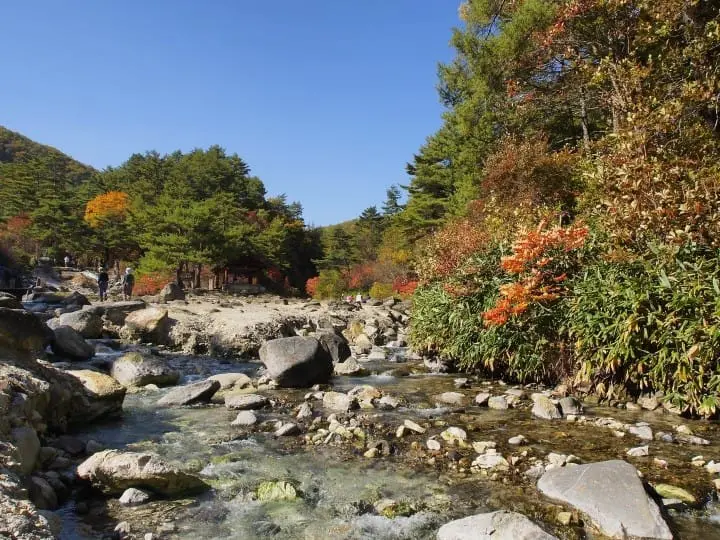
Picture courtesy of Tourist Guide of Gunma Prefecture
You will pass through much of Sainokawara Park on the way to the open-air bath, so enjoy the splendid scenery along the way.
Sainokawara Open-Air Bath
Address: Gunma, Agatsuma, Kusatsu 521-3 Google Map
Access: 20-minute walk from Kusatsu Onsen Bus Terminal
Official Website: Sainokawara Rotenburo
2. Otaki no Yu
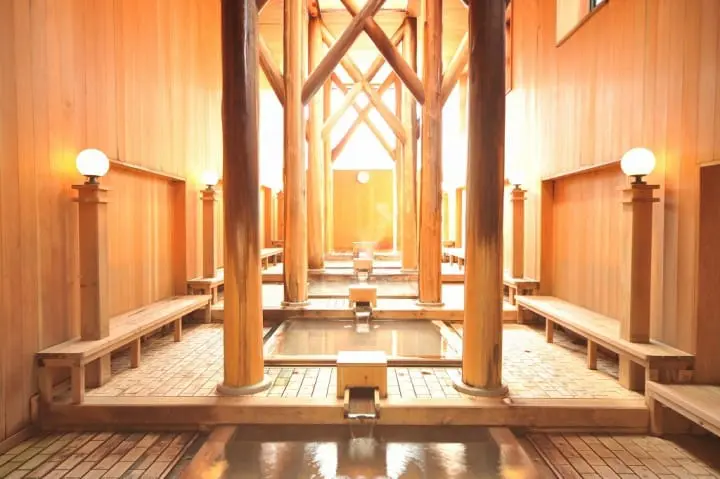
Picture courtesy of Otaki no Yu
Otaki no Yu is a facility with indoor, open-air, and private baths, a sauna, a lounge, a cafe, and eateries.
One bathing method to try is awase-yu. It is a way of taking baths traditionally in Kusatsu, where you bathe in multiple baths heated between 38 degrees to 46 degrees. This is done in order to allow your body to get used to the heat and minerals.
Private baths are also available, so this facility is recommended for those who wish to enjoy their time with their family, friends, or special someone.
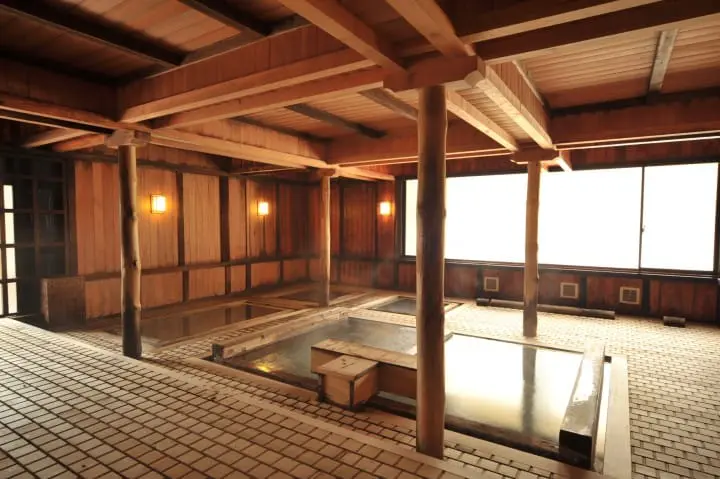
Picture courtesy of Otaki no Yu
Use the Santo Meguri Tegata coupon if you wish to visit multiple hot springs and save money. If you visit Sainokawara open-air bath, Goza no yu and Ohtaki no Yu, it will cost 2,100 yen normally. However, with the coupon, the fee will be discounted to 1,600 yen.
This discount coupon is sold at all three facilities, so purchase it when you get to the first facility.
Otaki no Yu
Address: Gunma, Agatsuma, Kusatsu 596-13 Google Map
Access: 9-minute walk from Kusatsu Onsen Bus Terminal
Official Website: Otaki no Yu
3. Shirahata no Yu
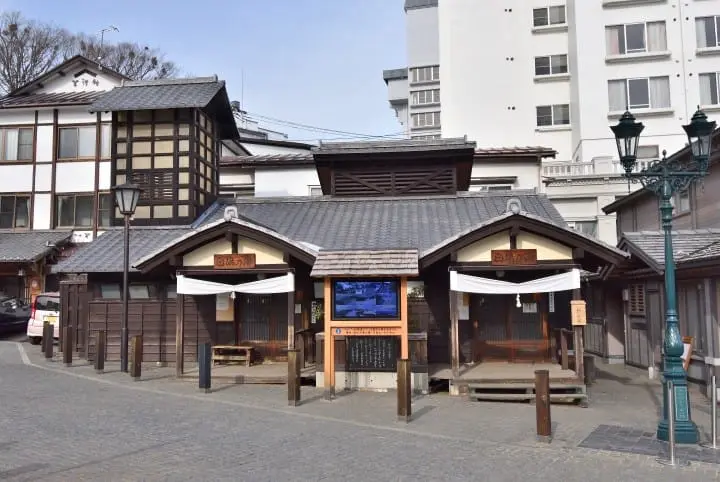
Picture courtesy of Kusatsu Tourism Association
Shirahata no Yu is a hot spring rated highly for its water quality. This is the only facility in Kusatsu Onsen with clouded water.
The wooden bath makes the experience all the more calming, adding a nostalgic feeling to the facility. There are baths with hot and lukewarm water, but both are quite hotter than average baths. You can bathe here for free!
However, please note that there are no lockers here to store personal belongings. It is advised to leave your valuables at your lodging.
Shirahata no Yu
Address: Gunma, Agatsuma, Kusatsu 112-1 Google Map
Access: 5-minute walk from Kusatsu Onsen Bus Terminal
Official Website: Shirahata no Yu (Japanese)
↑ Return to the top of article.
4. The Best Cuisine in Kusatsu
You can find many restaurants and souvenir shops near Yubatake or Sainokawara Street (the road leading up to Sainokawara Park). Why not taste some yummy Kusatsu treats while shopping?
Snack and Stroll Around the Hot Springs
Onsen manju (*2) is a must-eat when visiting a hot spring village in Japan. Numerous shops that sell it at Kusatsu Onsen, including Matsumura Manju, which has been in operation since 1945.
Flavors of the manju vary from shop to shop, so why not compare how they taste?
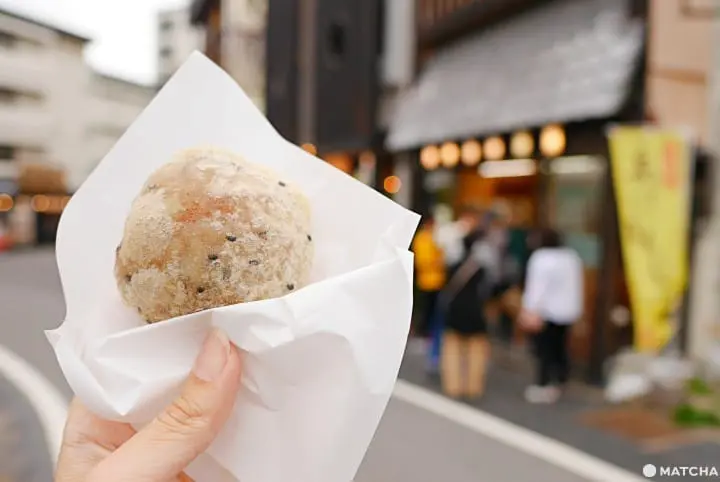
For example, Yamabiko Onsen Manju, makes age-manju, or deep-fried onsen manju. It has a sesame coating, and the crispy outside is addictively delicious.
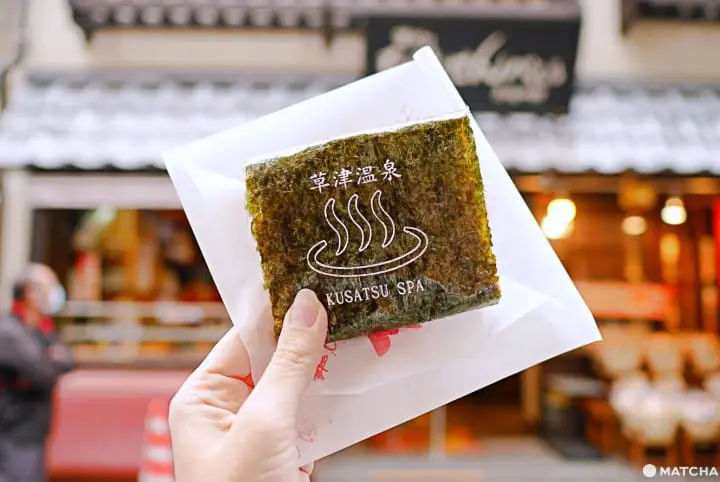
Other delicacies include soft serve ice cream, senbei rice crackers, and a rich, creamy egg cooked in hot spring water.
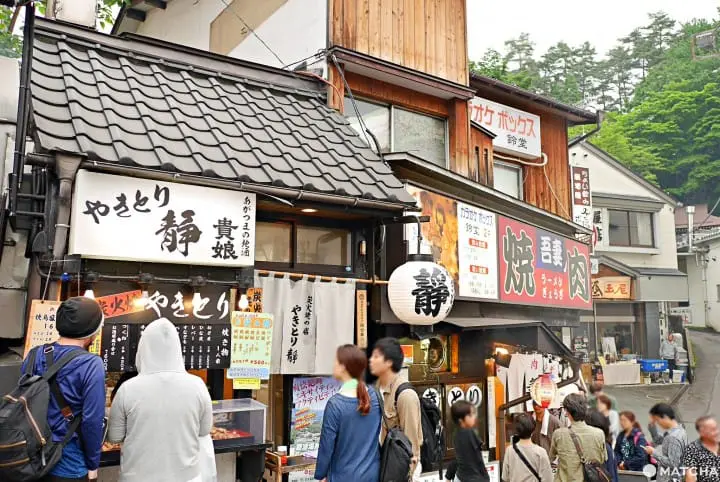
You can also find many shops selling yakitori (skewered chicken). Some shops are will even prepare it charcoal-grilled.
Enjoy all the delicious options Kusatsu Onsen has to offer!
*4 Onsen manju: Manju is a bun filled with red bean paste. Onsen manju has been steamed using hot springs. It can also refer to any manju sold in a hot springs area.
Mouth-Watering Joshu Wagyu Beef
Around the Yubatake area, there are many shops, cafes, Italian restaurants, izakaya bars, yakiniku (grilled meat), udon noodles, and soba noodle dishes.
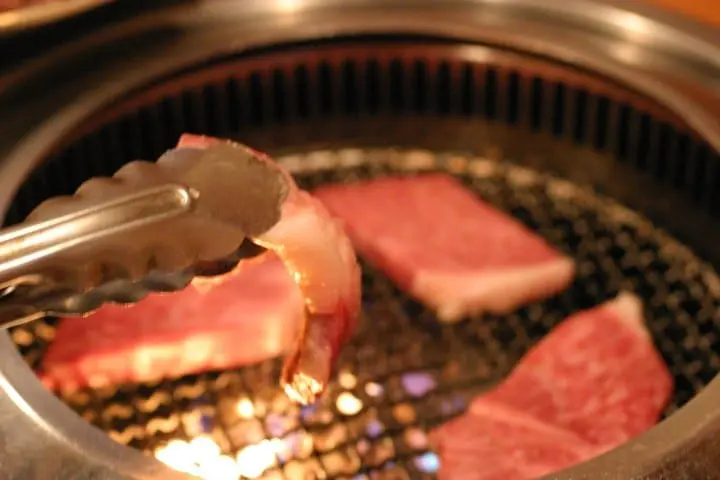
Picture courtesy of Tourist Guide of Gunma Prefecture
One must-eat is Joshu wagyu beef, a Gunma-produced beef. The cows are raised in the lush, green fields of Gunma which receive plenty of clean mineral water, allowing the meat to become soft and tender.
Shitatsuzumi is a yakiniku barbecue restaurant operated by a butcher. They get their meat by purchasing the entire cow, providing various parts of the luscious beef for a reasonable price. The flavor is worth trying.
↑ Return to the top of article.
5. Souvenir Shopping at Kusatsu Onsen
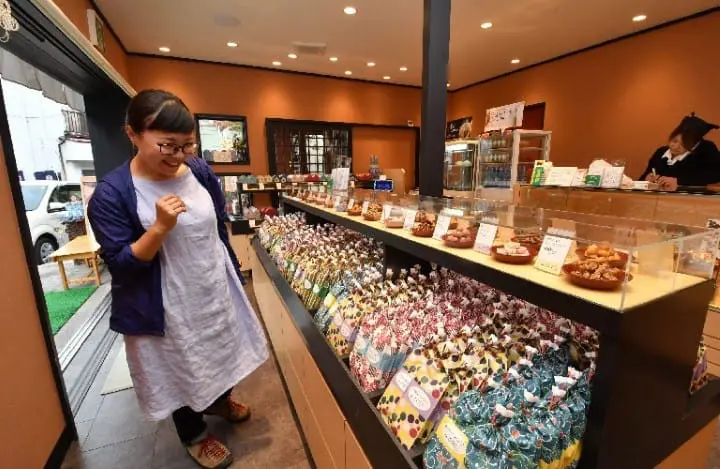
Picture courtesy of Yuagari Karinto
The karinto confections from Yuagari Karinto has a long shelf life and the packaging is very stylish and Japanese, making for a great souvenir. You can also try the Yuagari Joshu Beef Bun, which is made using Joshu Wagyu beef. This is a perfect treat to enjoy while walking around town.
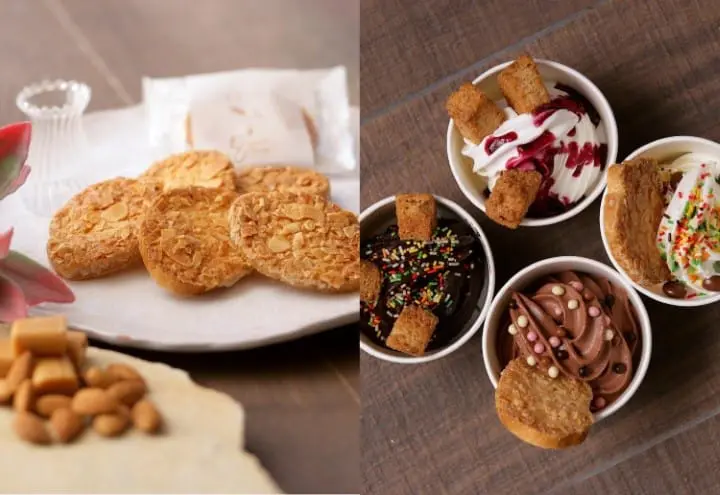
Picture courtesy of Kusatsu Rusk
The rusks from Grande Fiume Kusatsu are also very popular. Along with simple sugar and butter-flavored rusks, they have unique rusks with Earl Grey tea or garlic. It will make you want to try a variety of flavors. The gelato at this shop is also very popular. It even comes with a rusk, so it's a perfect opportunity to try both.
Other souvenirs include manju, senbei rice cakes, Gunma's specialty dried udon noodles, and Japanese crafts. There are also cosmetics that contain hot spring-made minerals that would make ideal gifts.
*Karinto: A traditional Japanese sweet made from a flour dough that has been fried.
Yuagari Karinto
Address: Gunma, Agatsuma, Kusatsu, Sensui 505 Google Map
Access: 7-minute walk from Kusatsu Onsen Bus Terminal
Official Website: Yuagari Karinto (Japanese)
Grande Fiume Kusatsu
Address: Gunma, Agatsuma, Kusatsu 594-4 Google Map
Access: 6-minute walk from Kusatsu Onsen Bus Terminal or Yubatake
Official Website: Grande Fiume Kusatsu (Japanese)
↑ Return to the top of article.
6. See the Light-up Displays at Night
One of the highlights of Kusatsu is the nighttime illumination held in the city. The Yubatake and Sainokawara Park area gets lit up after sundown, creating a dreamy scenery that is very different from the daytime.
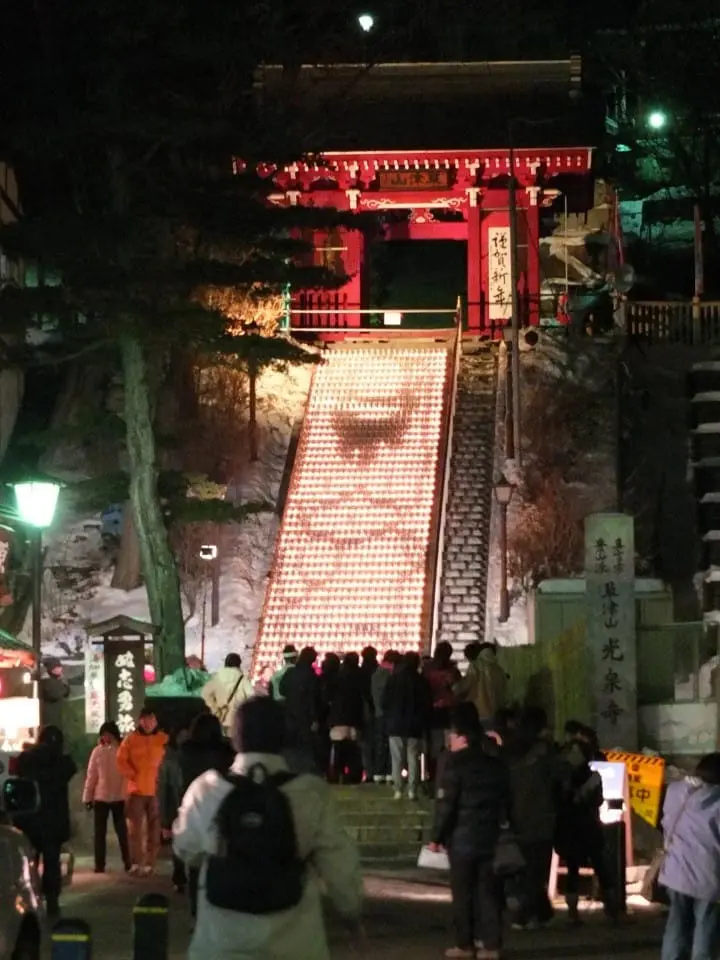
Picture courtesy of Kusatsu Tourism Association
Kosenji Temple, located right by the Yubatake, is particularly beautiful. From March to November on the second and fourth Saturday or holiday, is the Yume no Akari event, where 1,200 candles in clear cups create a masterpiece on the stone steps of the temple.
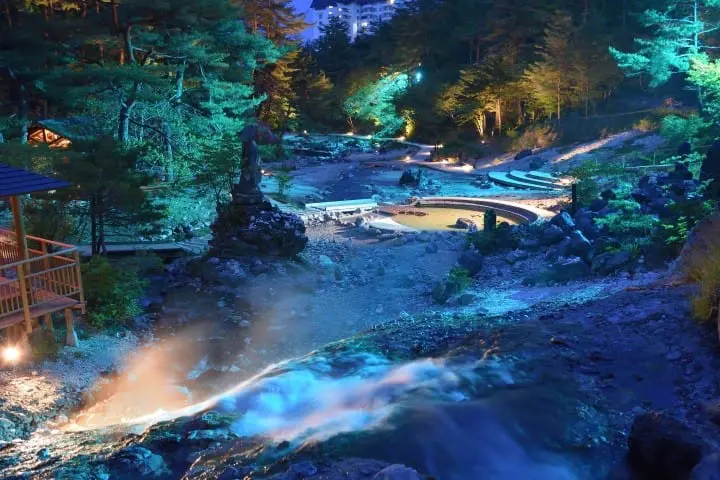
Picture courtesy of Kusatsu Tourism Association
When Sainokawara Park is lit up, you can bathe in the open-air bath that gives off a romantic ambiance.
Kosenji Temple
Address: Gunma, Agatsuma, Kusatsu 446 Google Map
Access: 2-minute walk from Kusatsu Onsen Bus Terminal
Official Website: Kosenji Temple (Japanese)
7. Hotels and Inns in Kusatsu Onsen
Kusatsu Hotel

Picture courtesy of Kusatsu Hotel
Kusatsu Hotel first opened its doors during the Taisho period as a Western-style hotel.
In 1952, it was renovated into a ryokan (Japanese-style inn). This is one of the six accommodations in Kusatsu Onsen that sources the hot spring from Sainokawara. The hotel has a stylish open-air bath and private baths where guests can experience a comfortable time.
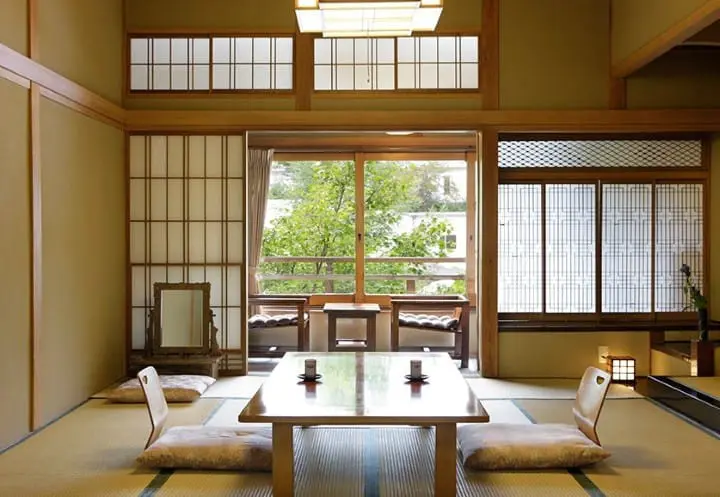
The structure is made of wood, and the rooms have a light, traditional feel. There are some rooms that have a Western-style bed. Meals are served in kaiseki-style as courses and are made with seasonal, healthy ingredients.
During your stay at the hotel, you will also have access to a spa, beauty treatments, a foot bath, and a cafe.
Kusatsu Hotel
Address: Gunma, Agatsuma, Kusatsu 479 Google Map
Access: 10-minute walk from Kusatsu Onsen Bus Terminal
Official Website: Kusatsu Hotel
Kusatsu Onsen Boun
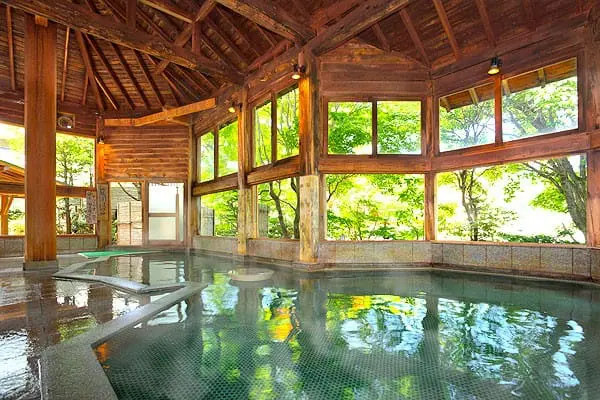
Picture courtesy of Boun
Boun is a historical hot springs ryokan that has been in operation since 1599. There are six baths that source its free-flowing waters from the Sainokawara and Bandaiko springs. You can enjoy the soothing waters, enjoy a peaceful moment, and take in the lush green surroundings.
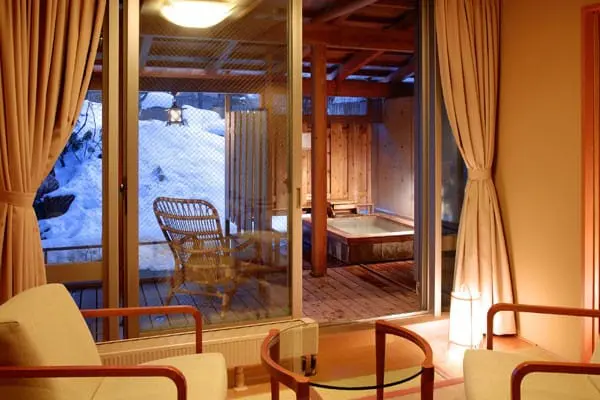
Picture courtesy of Boun
The rooms are mostly Japanese-style, but there are a few Western-style rooms with beds. Meals are authentic Japanese cuisine, made with local and seasonal ingredients, which you can enjoy in your room or a private room. There are also beauty salons and body treatment spas available.
Boun
Address: Gunma, Agatsuma, Kusatsu 433 Google Map
Access: 8-minute walk from Kusatsu Onsen Bus Terminal
Official Website: Kusatsu Onsen Boun
↑ Return to the top of article.
8. The Best Time to Visit Kusatsu Onsen
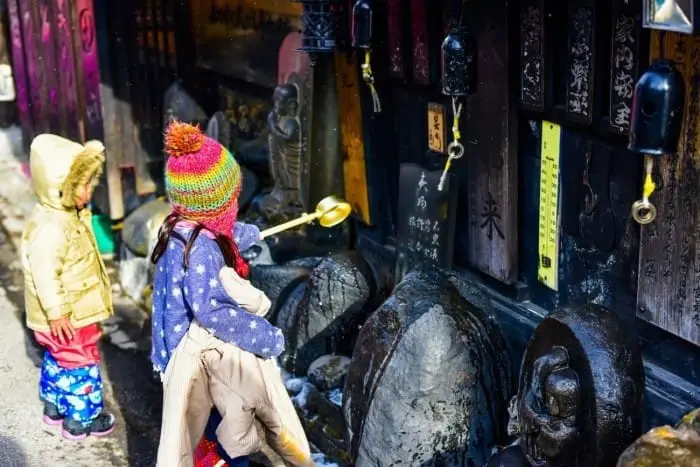
The average temperature of Kusatsu is around 7-8 degrees lower than Tokyo. If you wish to enjoy the snowy scenery, visit in the winter. If you want to escape the city heat, the summer is ideal.
Between March and April, the average temperature is around 3-9 degrees, so a winter jacket is needed. It is also advised to have a jacket even during early summer. The summer temperatures are very temperate, with the hottest days reaching around just around 20 degrees. However, it can get cold at night, so we recommend bringing a light jacket or something to wear on top to avoid the cold.
After September, the average temperature drops to about 15 degrees. Between December to March, it can get to below zero. Bundle up with scarves, down jackets, hats, and gloves. Kusatsu also receives heavy snowfall. Make sure to have shoes that are suitable for walking the snowy roads.
↑ Return to the top of article.
FAQ
Is Kusatsu Onsen worth visiting?
Kusatsu Onsen is a destination worth visiting for its renowned hot springs, including sulfuric waters with reputed healing properties, making it one of Japan's most famous onsen resorts. The Yubatake hot water field is a central attraction, showcasing the mineral-rich hot spring water in an aesthetically pleasing manner. Visitors can indulge in traditional Japanese onsen customs, donning yukata robes and experiencing the therapeutic benefits of the natural mineral waters. Surrounded by the picturesque beauty of the Joshinetsu Kogen National Park, Kusatsu Onsen offers a serene escape with stunning mountain vistas and peaceful environments perfect for relaxation. With year-round appeal and seasonal attractions, Kusatsu Onsen provides a charming and authentic onsen experience ideal for rejuvenation, cultural immersion, and natural splendor.
How long to spend at Kusatsu Onsen?
For an ideal experience at Kusatsu Onsen, a stay of two to three days is recommended to fully immerse yourself in the onsen culture, enjoy multiple soaking sessions, and explore the picturesque surroundings. This duration allows ample time to relax, unwind, and rejuvenate in the healing sulfuric waters of the hot springs. Visitors can also take advantage of the opportunity to explore local attractions like the Yubatake and Sainokawara Park, as well as engage in hiking or nature activities in the scenic Joshinetsu Kogen National Park. Whether the goal is relaxation, cultural immersion, or outdoor adventure, spending a couple of days at Kusatsu Onsen provides a well-rounded experience for visitors seeking tranquility, natural beauty, and the therapeutic benefits of traditional Japanese hot springs.
How do I get to Kusatsu Onsen from Tokyo?
Traveling from Tokyo to Kusatsu Onsen in Gunma Prefecture offers various transportation options. One common route is taking the JR Shinkansen from Tokyo Station to Karuizawa Station, transferring to the local Shinkansen or JR Agatsuma Line to Naganohara-Kusatsuguchi Station, and then catching a bus or taxi to Kusatsu Onsen. Alternatively, renting a car provides flexibility for exploration, with a drive of about 3 to 4 hours from Tokyo to Kusatsu Onsen. Direct highway buses from Tokyo, departing from Shinjuku or Tokyo Station, are a convenient and cost-effective choice, covering the distance in approximately 4 to 5 hours. These transportation methods cater to different preferences, allowing visitors to choose the most suitable option for their journey from Tokyo to Kusatsu Onsen.
Who should avoid onsen?
While onsen bathing offers numerous health benefits and relaxation for many, certain individuals should proceed with caution or avoid hot spring baths for various reasons. This includes pregnant women, particularly during the first trimester, individuals with uncontrolled high blood pressure, sensitive skin, or skin conditions like eczema, and those under the influence of alcohol. People with specific medical conditions such as heart disease, diabetes, or infectious diseases should seek medical advice before using hot springs to ensure their safety and the well-being of others. Prior consultation with a healthcare provider is recommended for individuals with health concerns to determine if onsen bathing is suitable for them, ensuring a safe and enjoyable experience while considering personal health factors.
How much is the train from Tokyo to Kusatsu?
The train fare from Tokyo to Kusatsu varies based on different legs of the journey. For the Shinkansen ride from Tokyo to Karuizawa, costs typically range between 5,000 to 10,000 yen or more, contingent on factors like seat type and booking timing. The subsequent local train journey from Karuizawa to Naganohara-Kusatsuguchi generally costs around 1,000 to 2,000 yen. Additional costs for transportation, such as a bus or taxi from Naganohara-Kusatsuguchi to Kusatsu Onsen, amount to approximately 1,000 to 2,000 yen. Overall, the total train fare from Tokyo to Kusatsu Onsen, factoring in these various segments, typically falls in the range of 7,000 to 14,000 yen or higher. Prices are subject to change, so travelers should verify current fare details with the respective train operators for precise and updated cost information.
Does Kusatsu Onsen allow tattoos?
Traditionally in Japan, the presence of tattoos can be associated with organized crime due to the historical association of tattoos with the yakuza (Japanese organized crime groups). As a result, many onsen (hot spring) establishments in Japan have policies that either prohibit or restrict entry to individuals with tattoos. However, attitudes towards tattoos in Japan are gradually evolving, and some onsen have started to relax these rules, especially for foreign visitors.
Kusatsu Onsen specifically has regulations regarding tattoos that are enforced by individual establishments within the resort. While some facilities may still maintain a no-tattoo policy, others are becoming more tolerant of tattoos, particularly at private onsen or ryokan (traditional Japanese inns).
It is advisable to contact the specific onsen or ryokan in advance to inquire about their policy regarding tattoos to avoid any inconvenience. Additionally, covering tattoos with waterproof bandages or wearing yukata (traditional Japanese robes) provided by the onsen may be an option at some establishments.
How many onsen are in Kusatsu?
Kusatsu Onsen, located in Gunma Prefecture, is famous for its numerous hot springs and onsen facilities. The town itself is home to over 100 hot springs sources, with many ryokan (traditional Japanese inns) and public baths offering access to these mineral-rich waters. Visitors to Kusatsu can explore a range of onsen experiences, from large public baths like Sainokawara Rotenburo to smaller, more secluded onsen at ryokan and hotels throughout the area. The abundance of hot spring sources in Kusatsu provides visitors with a wide selection of onsen options to enjoy during their stay in this renowned onsen town.
Enjoy Your Trip to Kusatsu Onsen
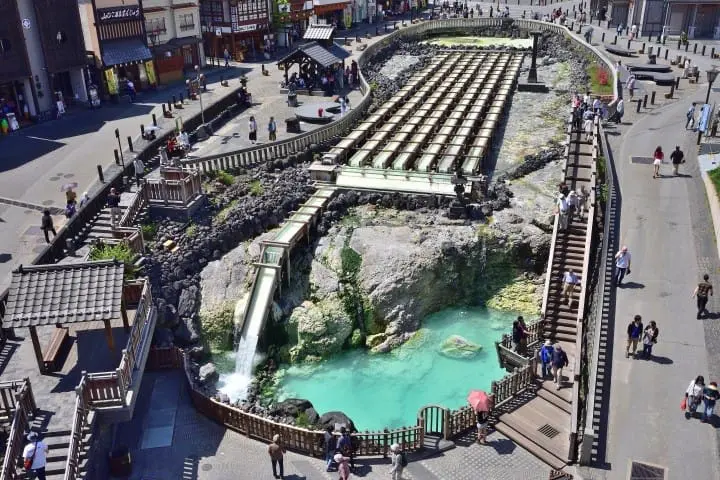
Picture courtesy of Kusatsu Tourism Association
Kusatsu is a wonderful resort where you can enjoy high-quality hot springs, ryokan, delicious food, and a beautiful nighttime view. In addition to Kusatsu, Gunma Prefecture is also known for the World Heritage Site-designated Tomioka Silk Mill, and Minakami, a destination great for rafting. Both are fun places to see while visiting Kusatsu.
Use this article as a reference for a pleasant and memorable time at a traditional hot spring town in Japan!
Read also
Main image by Pixta












































![[Just a short distance from Nagoya] Popular Taiwanese YouTuber Alan tours Aichi, Tokoname!](https://resources.matcha-jp.com/resize/720x2000/2026/01/08-255181.webp)

